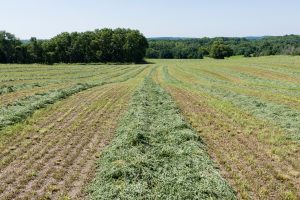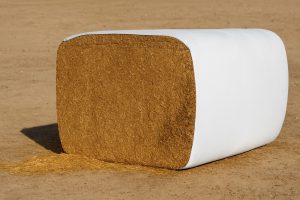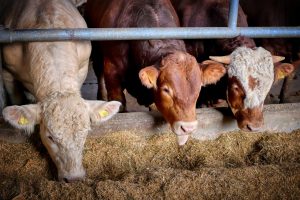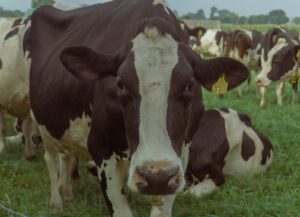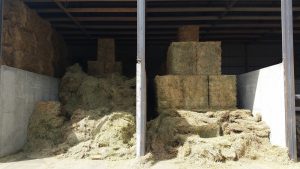Álvaro García
According to the U.S. Drought Monitor, as of mid-August 2025, approximately 26.8% of the United States, including Puerto Rico, and 32% of the contiguous Lower 48 states remain under drought conditions, ranging from abnormally dry to exceptional drought (D0–D4). Climate records indicate that drought coverage expanded from 29.6% in early June to 32.4% by early July, reflecting a worsening nationwide trend. Seasonal forecasts project drought persistence across much of the Western United States in the near term (drought.gov).
These climatic constraints directly affect silage management. Drought-stressed corn plants tend to mature more rapidly, often with reduced soluble carbohydrate concentrations and higher dry matter (DM) content. Such forage characteristics compromise compaction and natural fermentation, increasing the risk of nutrient losses and aerobic instability during storage and feedout. In addition, drought stress frequently increases lignification of plant cell walls, further limiting fiber digestibility and reducing the overall energy value of the silage (Zhang et al., 2023). At the same time, the reduced sugar pool slows lactic acid production, delaying the critical early pH decline that normally suppresses clostridia and spoilage organisms (Kung et al., 2018). Strategic application of microbial inoculants is essential to ensure preservation efficiency.
Harvest and ensiling management
Silage quality begins with crop maturity at harvest. The recommended harvest window for corn silage remains 32–35% DM, observed when the kernel milk line is one-half to two-thirds down (Kung et al., 2018). Harvesting at lower DM increases effluent risk and supports clostridial activity, while delayed harvest reduces starch digestibility and impedes adequate packing density.
Chop length is equally critical. A theoretical length of cut (TLC) of approximately 19 mm (¾ inch) with kernel processing ensures optimal particle size distribution and adequate kernel disruption. Kernel breakage exceeding 90% is advised to maximize starch availability and minimize fecal starch losses.
Packing density is a function of layer thickness, tractor weight, and packing time. Thin layers of ~15 cm compacted continuously should achieve a minimum of 240 kg DM/m³ (14 lb. DM/ft³) (Muck et al., 2018). Immediate sealing with an oxygen-barrier film and secondary UV-resistant cover, properly weighted, is essential to restrict oxygen ingress at the surface and sidewalls.
Microbial inoculants and their functional roles
Silage fermentation depends on the activity of lactic acid bacteria (LAB). In drought years, the limited water-soluble carbohydrate content of corn reduces the substrate for natural fermentation, delaying pH decline. Inoculants compensate by introducing selected LAB strains at high concentrations, thereby accelerating acidification, and suppressing undesirable microorganisms.
- Lactiplantibacillus plantarum is a homofermentative LAB that produces lactic acid rapidly, lowering pH and preserving proteins and soluble carbohydrates during the initial stages of ensiling.
- Pediococcus pentosaceus complements L. plantarum by fermenting a broader spectrum of sugars, performing well under higher DM conditions typical of drought-stressed silages (Muck et al., 2018).
- Enterococcus faecium often acts early in fermentation due to its tolerance of aerobic conditions, bridging the initial period until acid-resistant LAB dominate (García, 2021).
- Lactiplantibacillus buchneri, a heterofermentative LAB, produces acetic acid that inhibits yeast and mold proliferation, thereby enhancing aerobic stability at feedout (Muck et al., 2018).
Recent work with whole-plant corn silage demonstrated that inoculant mixtures outperformed single-strain formulations. Wang et al. (2022) reported that treatments combining L. plantarum and P. pentosaceus, with or without L. buchneri, not only improved fermentation kinetics but also modified phenolic acid profiles and supported more favorable in vitro rumen fermentation. Such outcomes suggest synergistic benefits of mixed-strain inoculants under variable field conditions.
Application practices and enzyme supplementation
For consistent results, inoculants must be applied at a minimum concentration of 10⁵ CFU/g fresh forage, using clean, chlorine-free water as a carrier, delivered evenly through applicators mounted at the chopper spout or blower (Kung et al., 2018). Uneven application significantly diminishes efficacy, particularly in high-DM silages produced under drought.
Enzyme additives are frequently combined with inoculants. Amylase hydrolyzes starch granules, improving energy availability. Cellulase and xylanase partially degrade cell wall polysaccharides, reducing NDF and enhancing fiber digestibility. Zhang et al. (2023) demonstrated that such enzyme supplementation can significantly improve silage quality and animal performance by increasing fiber degradation. In drought-stressed corn silage, where lignification may be elevated, enzyme-assisted inoculants can offer additional benefits.
Economic considerations
The economic justification for inoculant use is particularly strong in drought years. The cost of inoculant application typically ranges from $1–2 per ton of forage, while potential DM losses from poor fermentation or aerobic spoilage can exceed 5–7% of the ensiled mass (Muck et al., 2018). At a silage value of $60 per ton, a 5% loss equates to $3 per ton, well above the inoculant cost.
Case studies confirm the financial benefits. A 500-cow dairy in the Midwest observed a reduction in shrink from 8% to 4% after adopting a dual-strain inoculant, while milk yield improved by 0.7 kg (1.5 lb.) per cow per day. Across the herd, the additional milk income and reduced shrink equated to ~$90 per cow annually, or ~$45,000 in total, on an inoculant investment below $10,000.
Conclusion
The 2025 silage season occurs under the shadow of significant and persistent drought, affecting nearly one-third of the United States. These conditions accelerate crop maturity, raise silage DM, and limit natural fermentation substrates, collectively increasing the risk of poor preservation and aerobic instability. Under such constraints, rigorous harvest management and the use of microbial inoculants are essential.
Evidence indicates that inoculant blends combining L. plantarum and P. pentosaceus, often with L. buchneri, deliver the dual benefits of rapid acidification and extended aerobic stability. When paired with correct application techniques and, in some cases, enzyme supplementation, these products mitigate drought-induced risks, safeguard nutrients, and support animal performance. In drought years, the use of inoculants is not optional but rather an integral component of silage management strategy.
The full list of references cited in this article is available upon request.
© 2025 Dellait Knowledge Center. All Rights Reserved.


